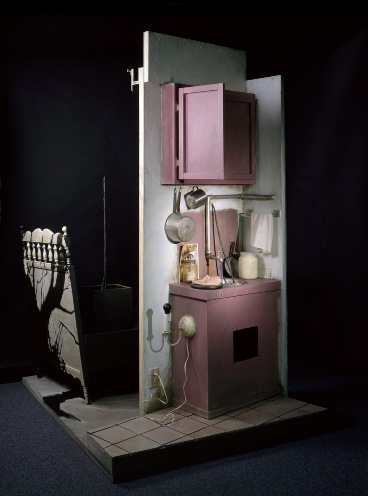On May 14, 2014, the Frost Art Museum, along with FIU's Cuban Research Institute and the Latin American and Caribbean Center, hosted three prominent Miami-based artists included in the Frost Art Museum's current exhibition, Our America: The Latino Presence in American Art. The panel, moderated by Frost Art Museum Director Dr. Carol Damian, provided each artist an opportunity to share how their careers developed and what inspired their artwork, and allowed them to give their perspectives on the state of Latino art in America today.
The first artist was María Martínez-Cañas, born in Cuba, raised in Puerto Rico, and now living in Miami. Martínez-Cañas assembled the pieces of her multifaceted identity into a totem by using a complex photographic process. She drew cubist patterns and abstracted natural forms on large-scale negatives, incorporated images drawn from Cuban colonial maps and pre-Columbian art, and printed them in black-and-white. These hybrid forms announced her multiple cultural connections and recalled the paintings of Cuban artist Wifredo Lam.
The second artist was María Brito. When she prepared the installation, Brito remembered the well-known children's song called El patio de mi casa (The Backyard of My House). In Brito's backyard, nature struggled to survive the uprooting of migration, symbolized by the constricting cradle, barren tree shadows, and cracked ground. Rain collected at the top of the wall and channeled down into the sink, giving a tree sapling a chance to thrive. Brito's humble Cuban-American kitchen was a site of remembrance, transformation, and growth.
The last artist was Arturo Rodríguez. Rodríguez's unsettled picture was inspired by Italian artist Giorgione's The Tempest (about 1505), a puzzling painting that portrays a nude woman nursing a child under the watchful eye of a man, possibly a soldier. Like The Tempest, Rodríguez's painting gathered disparate elements and offered no clear narrative. Three figures stand, sit, or walk through an environment that lacked a stable ground; the emotional intensity evoked the uprootedness of exile or the upheaval of troubled times.

María Brito, El patio de mi casa, 1990